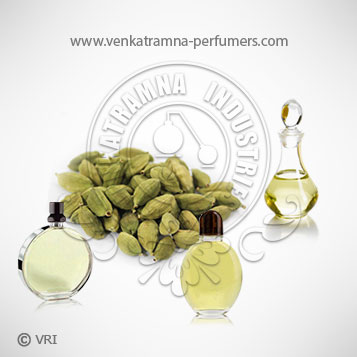
| Botanical Name | Elettaria cardamomum |
| Common Name | Cardomom, Cardomomi, Musore |
| Country of Origin | India, Nepal, Bhutan |
| Solubility | Soluble in oil, insoluble in water |
| Specific Gravity | Not Applicable |
| Optical Rotation | -17° +19° |
| Refrective Index | 1.452 - 1.979 |
| PlantPart | Seed |
| Bland With | Rose, Orange, Bergamot, Cinnamon Bark, Clove Bud, Caraway and Cedarwood. |
| CAS No | 96507-91-4 |
| Flash Point | 89° |
| Extraction Method | steam distillation |
Cardamom Oleoresin is produced by steam distillation from the dried ripe fruit (pods). The dark brown oleoresin is a yellow liquid with a sweet-spicy, warming fragrance. It is non toxic in nature and is widely used as a food condiment. Cardmom oleoresin is listed in the British Herbal Pharmacopoeia as a 'specific' for flatulence and dyspepsia.
Cardamom was well known in ancient times. The Egyptians used it in perfumes and incense and chewed it to whiten their teeth. The Romans used it for their stomachs when they over-indulged. The Arabs used it ground in their coffee. It is an important ingredient in Asian cooking.
Color : colorless to pale yellow liquid with a sweet-spicy, warming fragrance,
Aroma : Cardamom Essential Oil is sweet, spicy and almost balsamic in fragrance
Alpha Terpinyl Acetate 50%, Cineol 20%, Linalol 5%, Linalyl Acetate 4% & Limonene
It used extensively as a domestic spice, especially in India, Europe, Latin America and Middle Eastern countries. The oleoresin is employed in some carminative, stomachic and laxative preparations. Widely used as a fragrance component in soaps, cosmetics and perfumes especially oriental types. Important flavor ingredient particularly in curry and spice products.